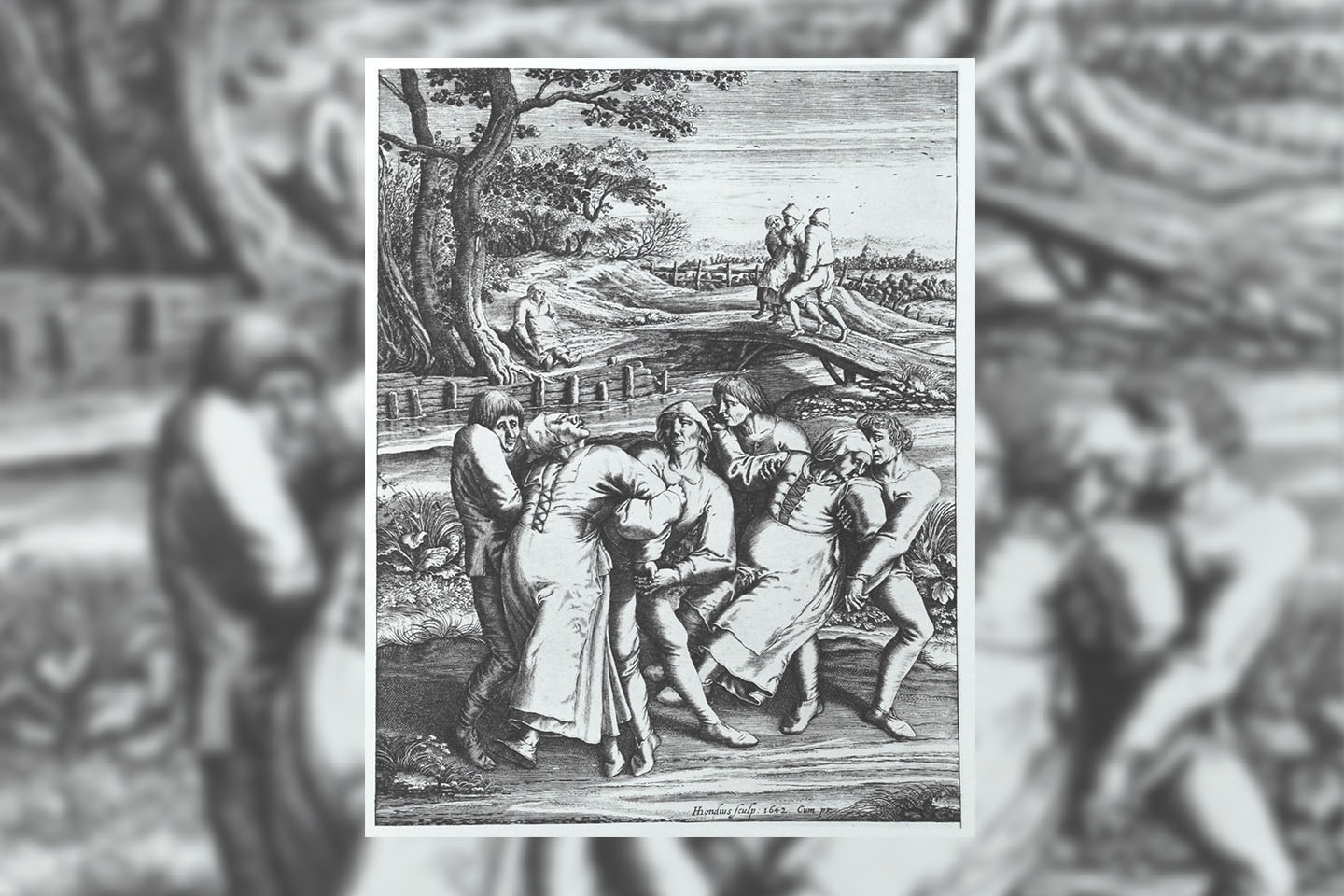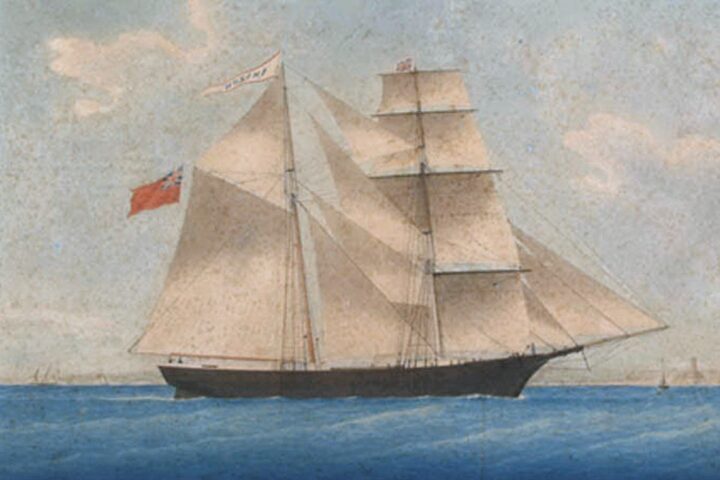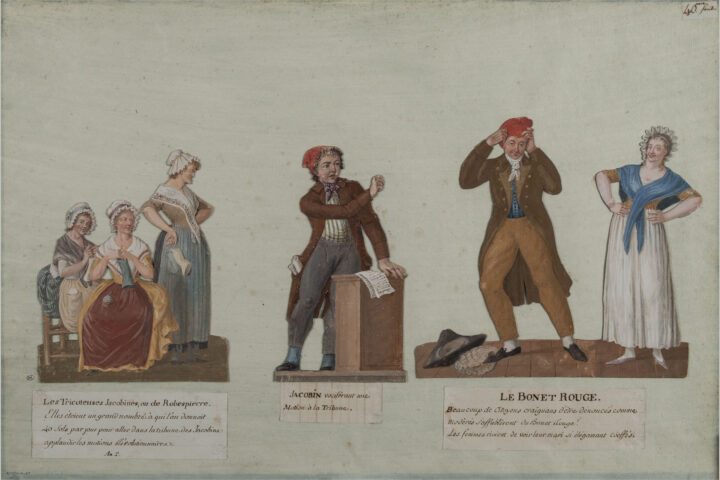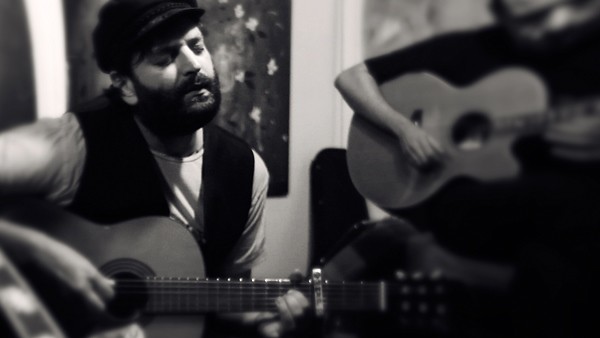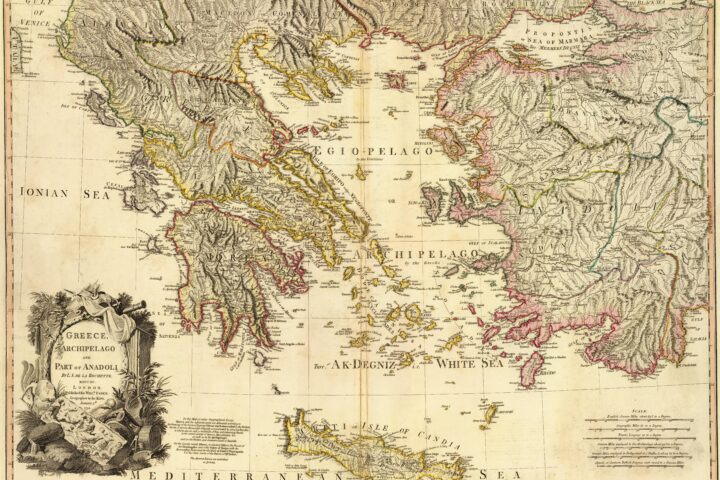Source: Wikipedia_Die_Wallfahrt_der_Fallsuechtigen_nach_Meulebeeck
One of the most mysterious events in the history book is the Dancing Plague of 1518. Technically, hundreds of townsfolk of the French town of Strasbourg danced uncontrollably for days on end. This phenomenon, which is labeled as the Dancing Plague of 1518, became so violent that some people accused others of dancing them to death.
Origin and Spread of the Dancing Plague
The Dancing Plague started showing first in Strasbourg in July 1518. It starts as a result of a young woman named Frau Troffea dancing for no known reason in the streets. This is followed immediately by a few weeks when others join her in such an activity, and the dance spreads to other parts of the city. The affected people entered a trance, where their bodies twisted and contorted to rhythmic movements. Some danced straight days without resting, with blistering and bleeding on their feet.
This dancing was not confined to Strasbourg alone. Its similar eruptions were soon to be witnessed elsewhere in Europe: in Germany, the Netherlands, and Belgium, to give but a few examples. The plague spread with incredible speed, often surprising cities that seemed to be in no relation whatsoever to Strasbourg.
The Symptoms and Effects
The symptoms of the Dancing Plague were essentially physical. Affected patients suddenly began uncontrollable dancing, characterized by convulsions, hallucinations, and delirium. Some people claim that they feel a burning sensation in their feet because, for all they know, it is on fire. Extreme intensity made most victims exhausted, dehydrated and caused death in many cases.
Psychological impacts of the plague were also tremendous. Most people infected by the disease complained of shame, guilt, and even fear. The dancing was seen as a sign of possession or demonic influence; in some places, these afflicted ones were even ostracized by their societies.
Theories and Explanations
Despite all this study done on the subject, the cause of the Dancing Plague is still a matter of speculation. Some of the theories used to try to explain this outbreak include: Mass Hysteria
The Dancing Plague is at its highest explanatory level as an incident of mass hysteria. The chaotic social conditions at the time may have driven and produced an outbreak of hysteria with the help of psychological factors. For many, dancing was a way of expressing their anxiety, frustration, or other emotional distress.
Poisoning
Other theories pertaining to possible causes of the plague were given by some historians, who argue that the individuals might have been poisoned through tainted food and drink. Such a scenario seems plausible, given the apparent speed with which the plague was spreading within cities and towns. To date, however, such a hypothesis has never been proven through concrete evidence.
Medical Causes
There were several more recent studies that indicated the Dancing Plague could have been caused by a medical condition, such as a neuropsychiatric disorder or an infection of some sort, caused by a bacterium. No conclusive evidence exists to support these theories, however.
The Effects of the Dancing Epidemic
Major impacts on lives living in and around Strasbourg resulted from the Dancing Plague of 1518. It brought fear, panic, and social disruptions to the situation. Most people lost their jobs, homes, or loved ones. It also affected the economy since businesses were compelled to shut down and trade was impeded.
The Dancing Plague is a reminder of the strange and inexplicable phenomena that might befall human history. While it may never truly be known what caused this event, this is an interesting study in the power of collective behavior, the mystery of which continues to endure to this day.
The Dancing Plague and Modern Society
This Dancing Plague of 1518 is an incident which, to this date, still has a kind of fascination and interest for people. It reminds the world of the significance of understanding the human mind and the power of collective behavior. In this context, it also underlines the necessity for scientific inquiry as well as critical thinking before forming judgment regarding such unexplained events.
The Dancing Plague and other cases of mass hysteria and crowd behavior, which have occurred in the last several years, highlight a need to ask difficult questions regarding influences brought about by social media, globalization, and many others.
It is both a cautionary tale regarding fear, panic, and superstition and an exaltation of a people’s resilience in the face of adversity.
The Dancing Plague of 1518: A Modern Perspective
The Dancing Plague of 1518 is still one of the mysterious events in history. Its causes, symptoms, and resolution remain a riddle for historians and medical experts. While many traditional explanations either attribute it to mass hysteria, religious frenzy, or poisoning, contemporary analysis explains this phenomenon in a clearer manner.
Psychological Factors and Collective Behavior
Dancing Plague is a manifestation of a collective behavior. This phenomenon is described as where people in a group tend to think, feel, and act in the same way. In the case of Strasbourg, the psychological factors may have triggered the event. Pressure, anxiety, and fear, possibly resulting from social unrest, economic issues, or even religious reasons, could have tended to create the fertile ground for mass hysteria.
The dancing, which appears to spread from person to person, is likely to be a strong psychological phenomenon. Any other explanation for seeing a bystander exhibiting such bizarre behavior, being reminded of it by a second bystander and yet not doing anything until an actual case develops? A disease spreading from person to person psychologically rather than biologically could well explain the rapid rise in cases of plague, social contagion.
Medical Hypotheses
While medical hypotheses could be plausibly advanced, another aspect that has been addressed pertains to the neurological explanation. Actually, a number of researchers postulated the fact that the afflicted people may be suffering from some kind of neurological disorder, like epilepsy or movement disorder. Such conditions lead to involuntary movements and states of consciousness, and may be responsible for some symptoms of the Dancing Plague.
Another theory behind the plague is a bacterium or virus responsible for causing the disease. There are pathogens that could infect the nervous system, thereby causing abnormal behavior. However, there is nothing certain enough to prove that it may have some bases, thereby partially dismissed as well.
The Role of Religion and Superstition
Religious beliefs were given a lot of consideration in the interpretation of the Dancing Plague. Many perceived it as some form of demonic possession or divine punishment. The belief system may have actually influenced the behavior of affected people and how the public perceived the crisis.
A belief in supernatural force might have added to the psychological distress faced by those dancing. Feeling possessed or cursed may have further dwelled on the shame, guilt, and despair they are facing. Such feelings then fueled the intensity of dancing.
The Legacy of the Dancing Plague
It left behind a legacy with regard to what eventually came to be known as collective behavior, in which individual behavior in a large group often makes people do acts which, if they were alone, nobody would dare to do. It was an instance where the human mind seemed to work mysteriously forever. A key lesson from this phenomenon is that unusual events require scientific investigation and critical thinking.
Many other instances of mass hysteria and collective behavior have been witnessed recently in comparison to the Dancing Plague. These have thrown up many very important questions about the role of factors like social media and globalization in molding human behavior.
A great lesson that the Dancing Plague tells us is against the dangers of fear, panic, and superstition; it also reminds us of the resilience of the human spirit and the ability of people to be able to overcome adversity.
And thus, as we start to disentangle the events of the Dancing Plague, perhaps we shall reach that final understanding with regard to the human mind, what shapes it to be what it is, or perhaps we may unravel it but partially. In this enigmatic event lies the reminder that under the most unimaginable circumstances, meaning and understanding can still be discovered.
Sources:

